For anyone who is buying, splitting and stacking firewood, the term “chord of wood” is thrown around. People will tell you the total volume of each measurement and other rough estimates, but they hardly ever show you a whole chord of wood in real life.
For me personally, graphics of firewood doesn’t cut it (get it?). I need to actually see a chord, half chord, and face chord of wood to know how much is in each. So, I went to my firewood pile and stacked each one! Let’s compare.
Disclaimer: The figures in this post are from me manually stacking wood. There is no scientific basis behind these numbers. It’s just me stacking, weighing, and counting firewood in my backyard and reporting what I found. All images and graphics were taken and designed by me. Feel free to use and link to this article for credit.
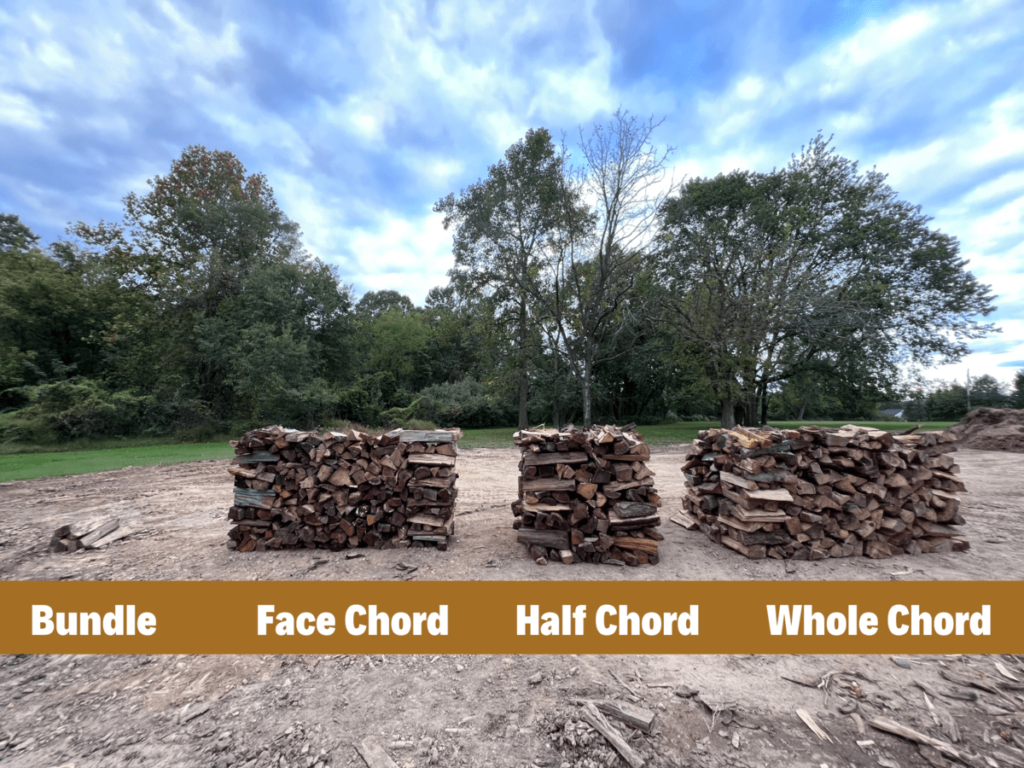
Whole Chord
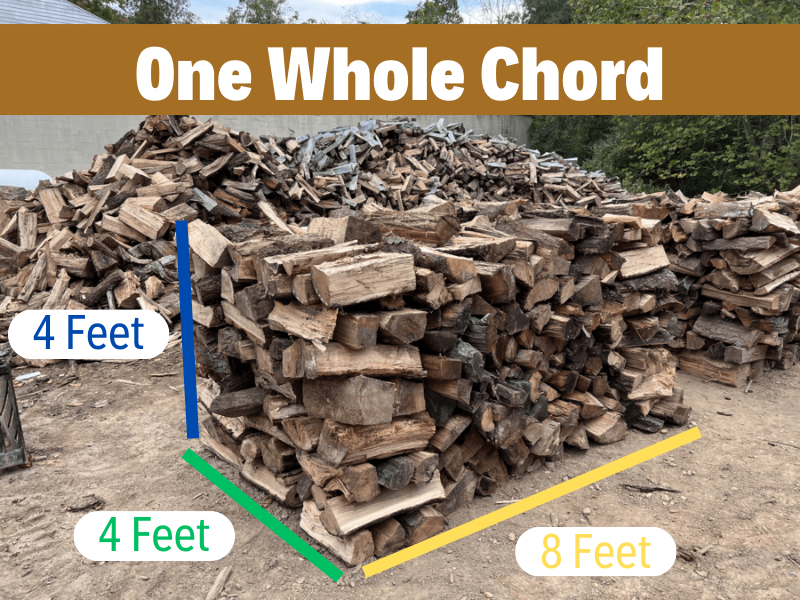
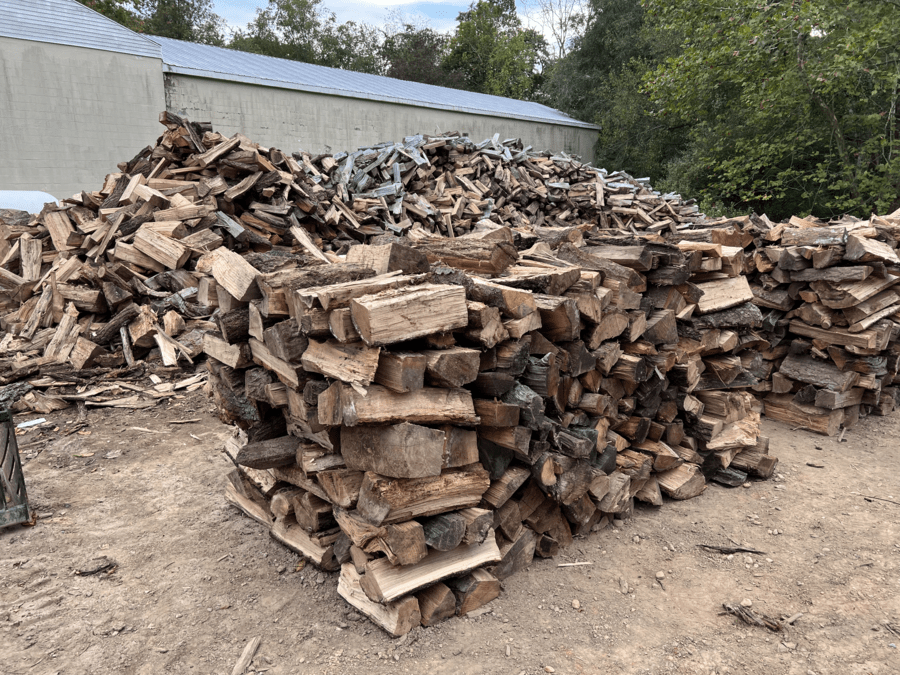
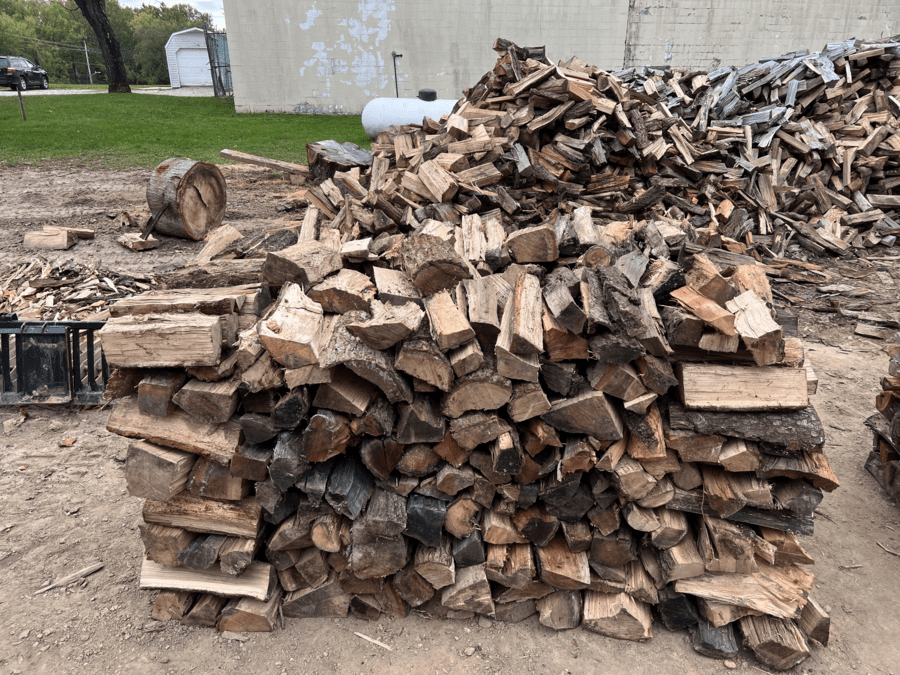
A whole chord of firewood is a rectangular pile that measures 8 feet in length, 4 feet wide, and four feet tall. This is 128 cubic feet of wood, not accounting for air space in the pile. It depends on the girth and length of wood, but expect between 500 and 700 pieces of firewood in a chord.
From previous experiments, I found the average piece of dried firewood to weigh 5.7 pounds per piece. With this average, A chord of dried firewood will weigh between 2,500 and 4,000 pounds.
In my case, I didn’t have the patience to count every piece of wood in a chord. However, I made an estimate by counting a face chord of wood. That’s a measurement that I’ll get to later, but it’s about 1/3 of a whole chord.
The chord I stacked has an estimated 450 pieces of firewood. My wood is split a bit larger than other suppliers, so it makes sense that my count of wood is on the lower end.
One thing I noticed from this demonstration is that a chord of wood is three face chords, a measurement I’ll get to later on in this article. This basically means there are three rows of wood in a chord.
Notice I stacked each end of the pile in what I call a “Jenga” method. This is the method of laying alternating layers of firewood like you would a Jenga Tower. This acts as a support beam for each end of the pile, allowing me to stack parallel pieces of firewood in the center, which can fit more firewood.
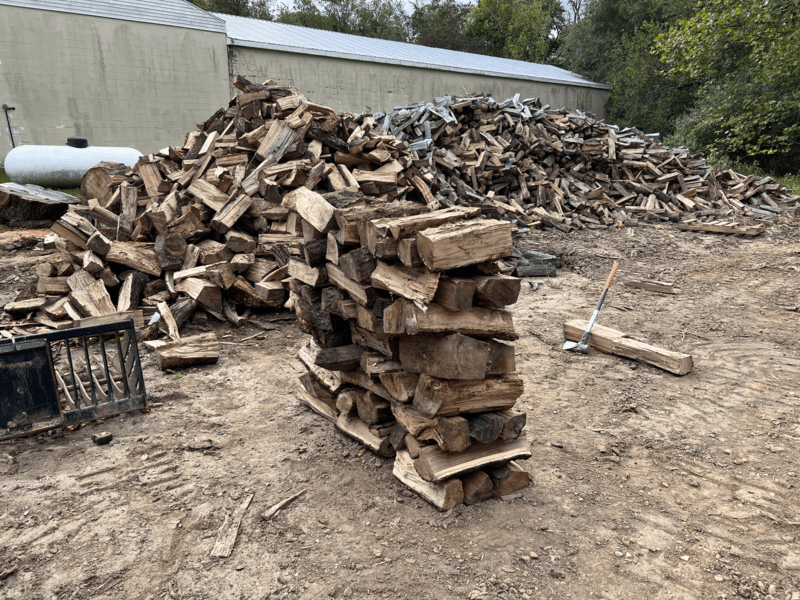
The image above is the isolated “Jenga” end of the chord. It measures 4 feet tall and acts as a support beam for my whole chord. If I was to build a firewood bin with supported walls on both sides, I could skip this step and fit more wood in a chord.
I don’t take the time to make a chord bin because I sell firewood commercially. That big pile behind my chord is mixed hardwood that I sell, and I sell out every year. So, there’s no real point to carefully stacking the wood before I sell it.
Half Chord
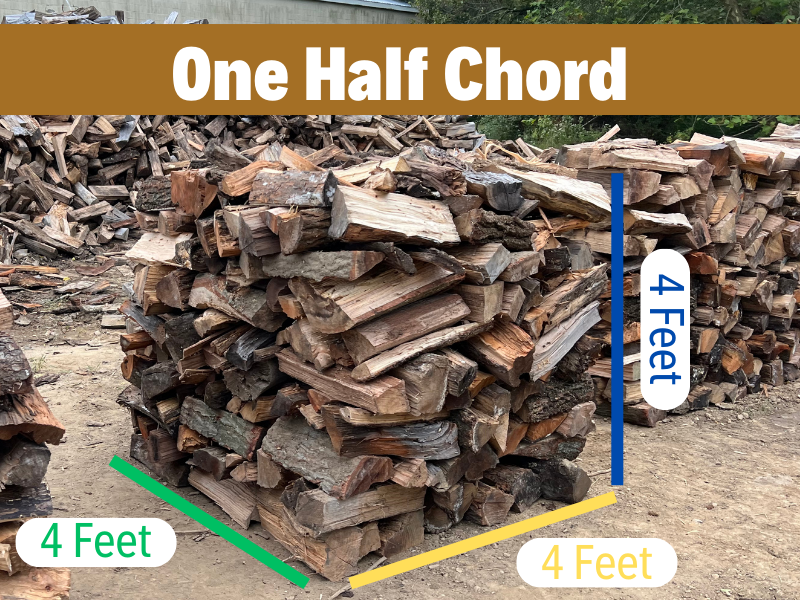
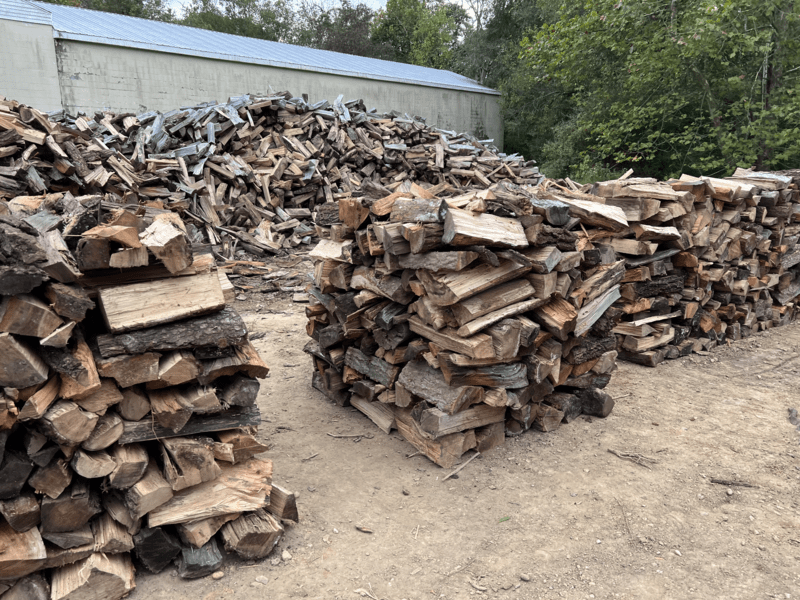
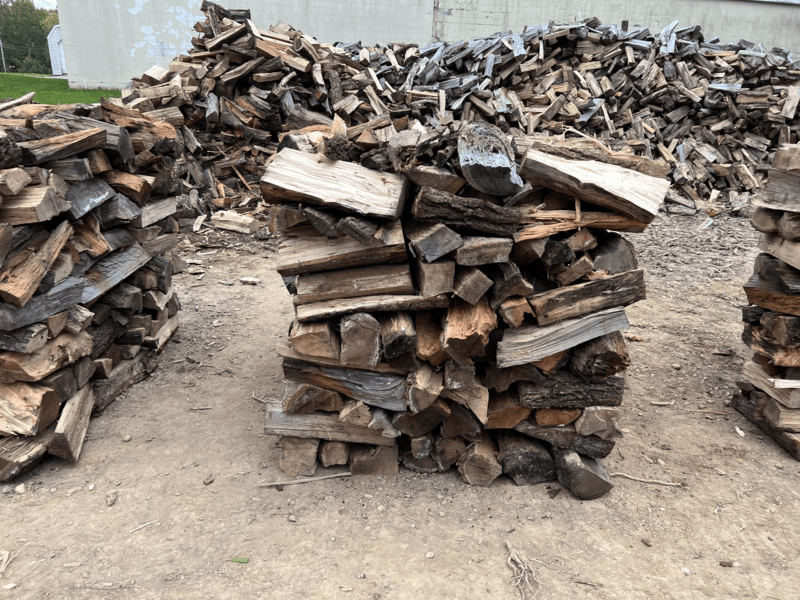
A half chord of firewood is a cuboid pile that measures 4 feet in length, 4 feet wide, and four feet tall. This is 64 cubic feet of wood, not accounting for air space in the pile. It depends on the girth and length of wood, but expect between 250 and 450 pieces of firewood in a half chord.
From previous experiments, I found the average piece of dried firewood to weigh 5.7 pounds per piece. With this average, A half chord of dried firewood will weigh between 1,500 and 2,500 pounds.
Again, for this pile I used the Jenga method on both ends. This severely limited the number of firewood in this half chord. If I laid them all the same direction, there would be much more.
If you ever buy firewood by the pallet or IBC tank, this is nearly a half chord. In my pallet study, I managed to fit 40% of a chord on a pallet.
Face Chord (Also called a Rick Chord)


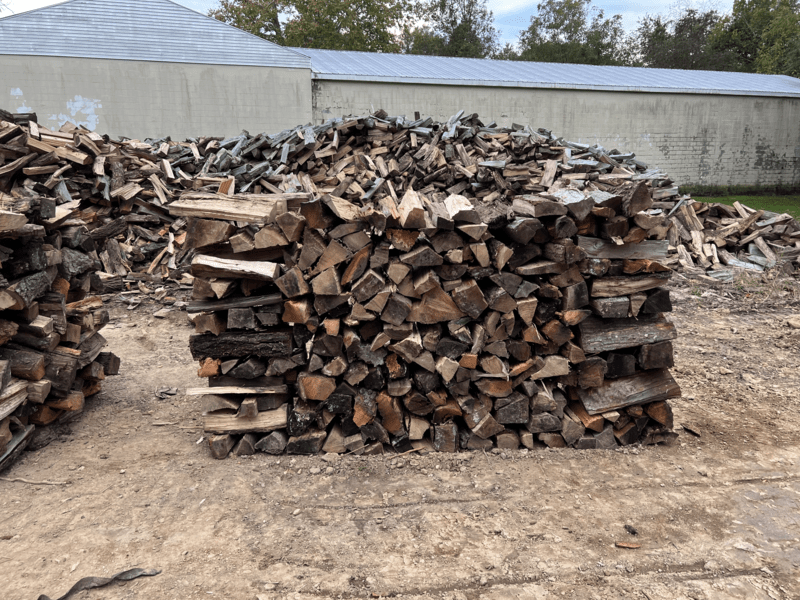
Another common measurement of firewood is the Face Chord, also known as the Rick Chord.
A face chord, also called a rick chord, is a one-row stack of firewood that measures 8 feet in length and 4 feet in height. The width of the pile depends on how long you cut your firewood, with the standard being 16 inches. In my face chord, I stacked 135 pieces of wood.
From previous experiments, I found the average piece of dried firewood to weigh 5.7 pounds per piece. With this average, A rick chord of dried firewood will weigh between 750 and 1000 pounds.
If this seems like the measurement of wood you’re interested in, you will want to read my article: See How Much Firewood Your Truck can Haul (Calculator). A face chord is about as much wood as you can fit in the back of your pickup truck.
Some firewood retailers sell wood by the pickup truck load, which they will also call a rick or face chord interchangeably. The term “face” comes from the idea that it’s the dimensions of the front face of a whole chord.
One thing I noticed while stacking this wood is that there are three face chords in a whole chord. Keep that in mind when purchasing firewood. Most bulk firewood suppliers will sell you one whole chord for less than it would cost for three face chords.
Bundle
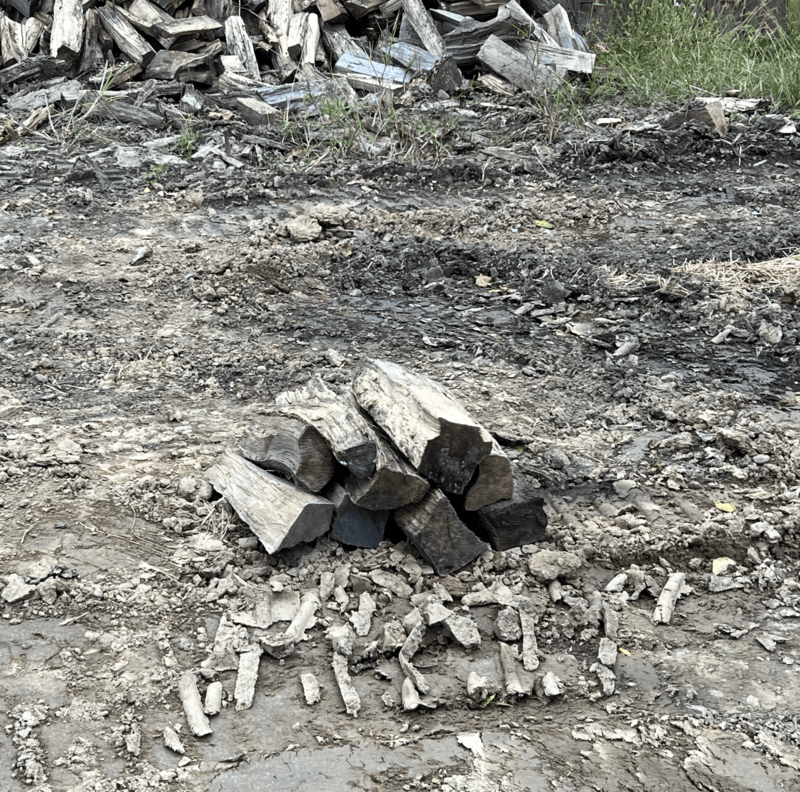
I almost didn’t add this part to the article, but it’s worth mentioning. The common firewood bundle you can get at a campground, grocery store, or your neighbor on the side of the road is a good option in a bind.
A bundle of firewood will have 5 to 12 pieces of firewood. These pieces should be “telephone pole” straight and high quality wood. There is no clear guidelines on whether it should be strictly hardwood, softwood, or even pallets taken apart and bundled. Ask your firewood supplier before purchasing for more details.
It is almost always more economical to buy firewood in bulk instead of bundles. Nowadays, a bundle will go for $10, which is about $1 per piece of firewood.
A chord, on the other hand, goes for $200 in Delaware (where I sell firewood). Assuming there’s about 500 pieces of firewood in a chord, that’s $0.40 a piece of firewood. It may not make sense if you don’t have a means to store all that wood, but it’ll be much cheaper if you’re making a lot of fires.
Pallet of Wood
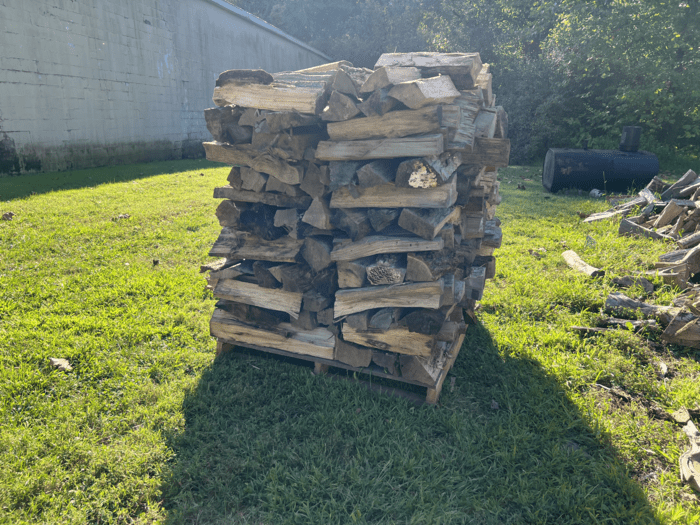
On the rare occasion, people buy pallets of firewood. It’s not as commonplace as a chord of wood, but it’s worth mentioning.
I talked to a few suppliers who sell wood by the pallet. They all stack their firewood 4 feet tall. They often wrap it in plastic wrap to keep it stable. In my article, Pallets of Firewood 101 (Dimensions, Weight, & More), I took the time to stack wood on my own pallet to see how much wood you’ll get.
I found that I was able to stack about 53 cubic feet of wood on the pallet, which is just under half a chord. See half a chord below for comparison:
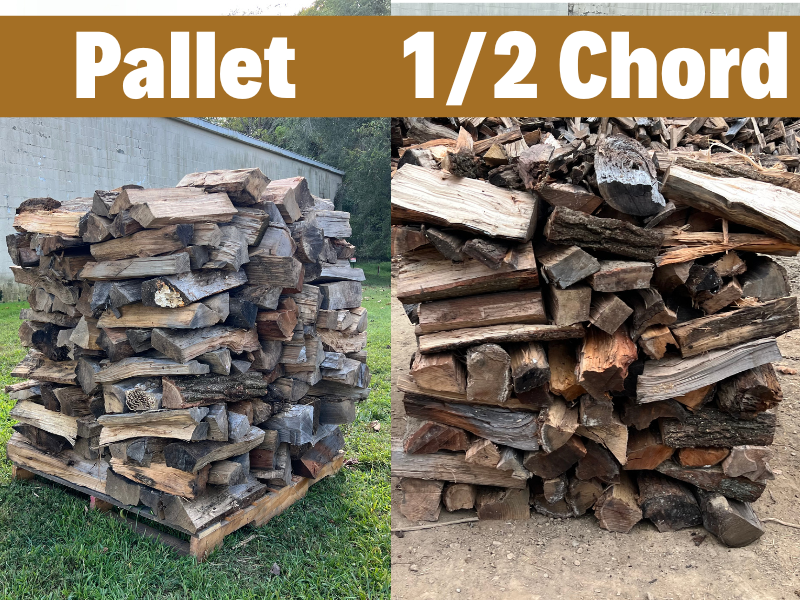
I want to let you in on a trade secret: a chord of wood is almost always the best bang for your buck. I’ve seen people sell pallets of wood for the same price as a chord! If you only want a pallet’s worth of wood, fine, but remember its the same cost for 60% less firewood. Don’t get taken advantage of!
How Firewood is Measured
If this is all new to you, the amount of terms I’m throwing at you may be overwhelming. I want to quickly explain how firewood is measured.
You might be frustrated I’m explaining things by the chord and just want a plain number. You may be saying at the end of the day, how many pieces of firewood am I buying?
I understand where you’re coming from. The issue is we firewood suppliers don’t have the time to count out 500 pieces of wood. This figure will also be inconsistent because it’s impossible to split each piece of firewood to the same length and width. If I gave you 500 thin pieces, you’d get much less wood than 500 thicker pieces of firewood.
My dad always said, the more time you spend on each piece of the firewood, the more money you lose. We have to cut, split, stack, and ship each piece of wood and profit very little. If we spent time counting the wood as well, firewood would be much much more expensive.
To make things consistent, firewood suppliers measure wood by the square footage. A chord, as mentioned earlier, is 128 cubic feet. This makes a half chord 64 cubic feet, and so on. See this graph I put together:

With this method, you know that when you buy a chord you are getting 128 cubic feet of firewood. This method isn’t perfect. Loosely thrown firewood will be less than a carefully stacked chord, and ugly pieces lie unevenly and take up more space. But at the end of the day, it’s the best method we’ve got for measuring firewood.
With that, I want you to change your mindset from counting firewood to measuring how much space firewood takes up. You aren’t buying 500 pieces of wood, you’re buying 128 cubic feet.
